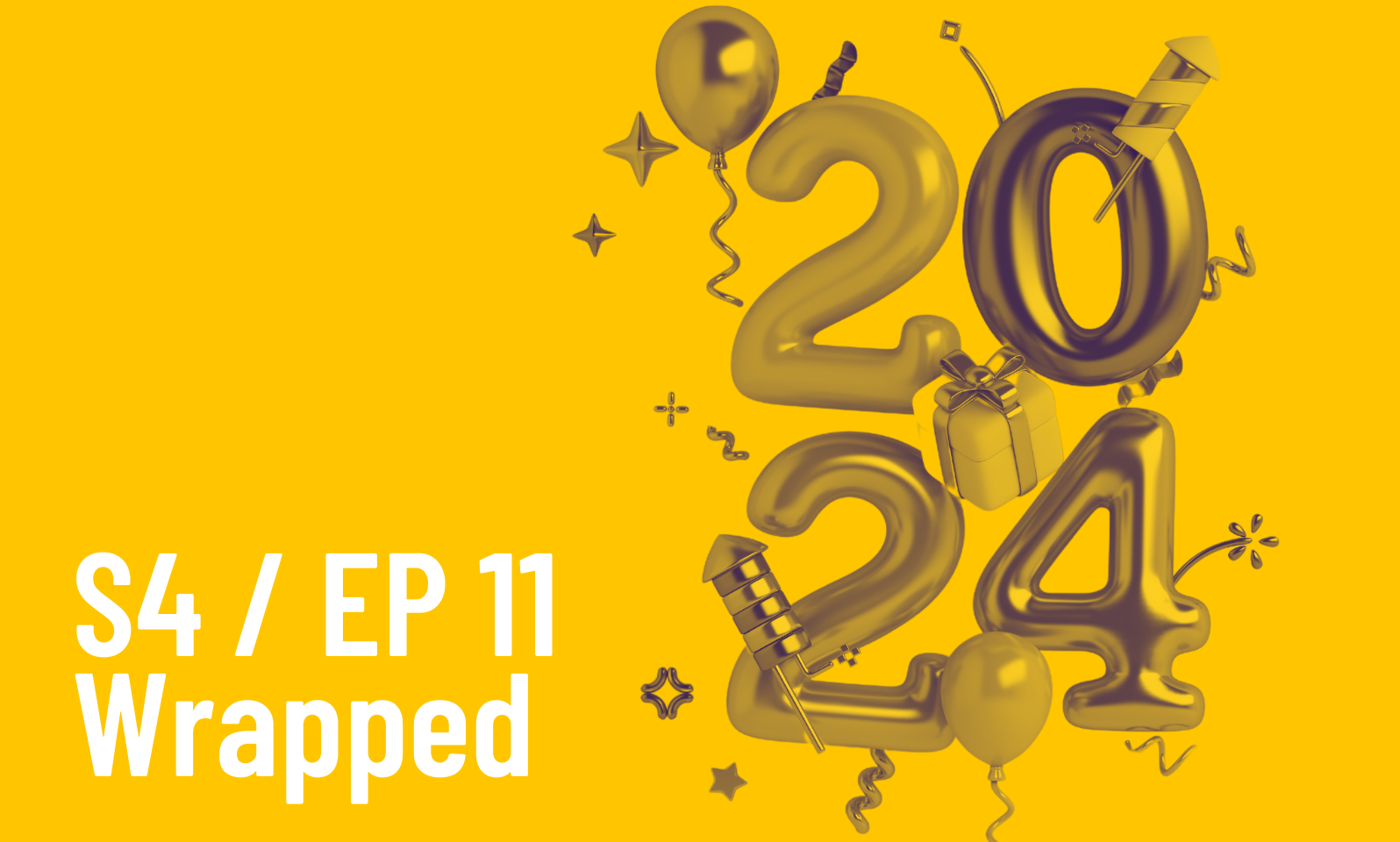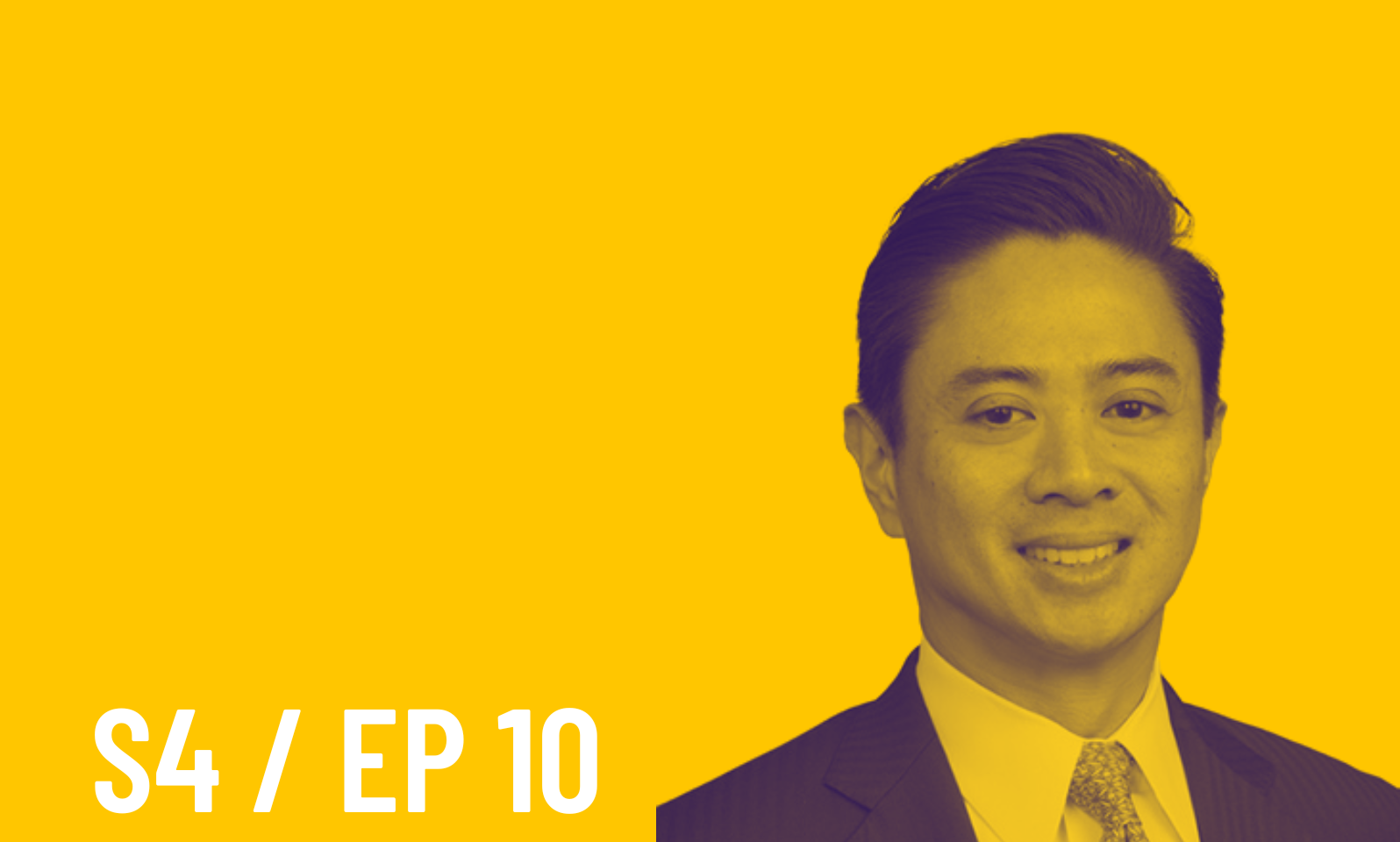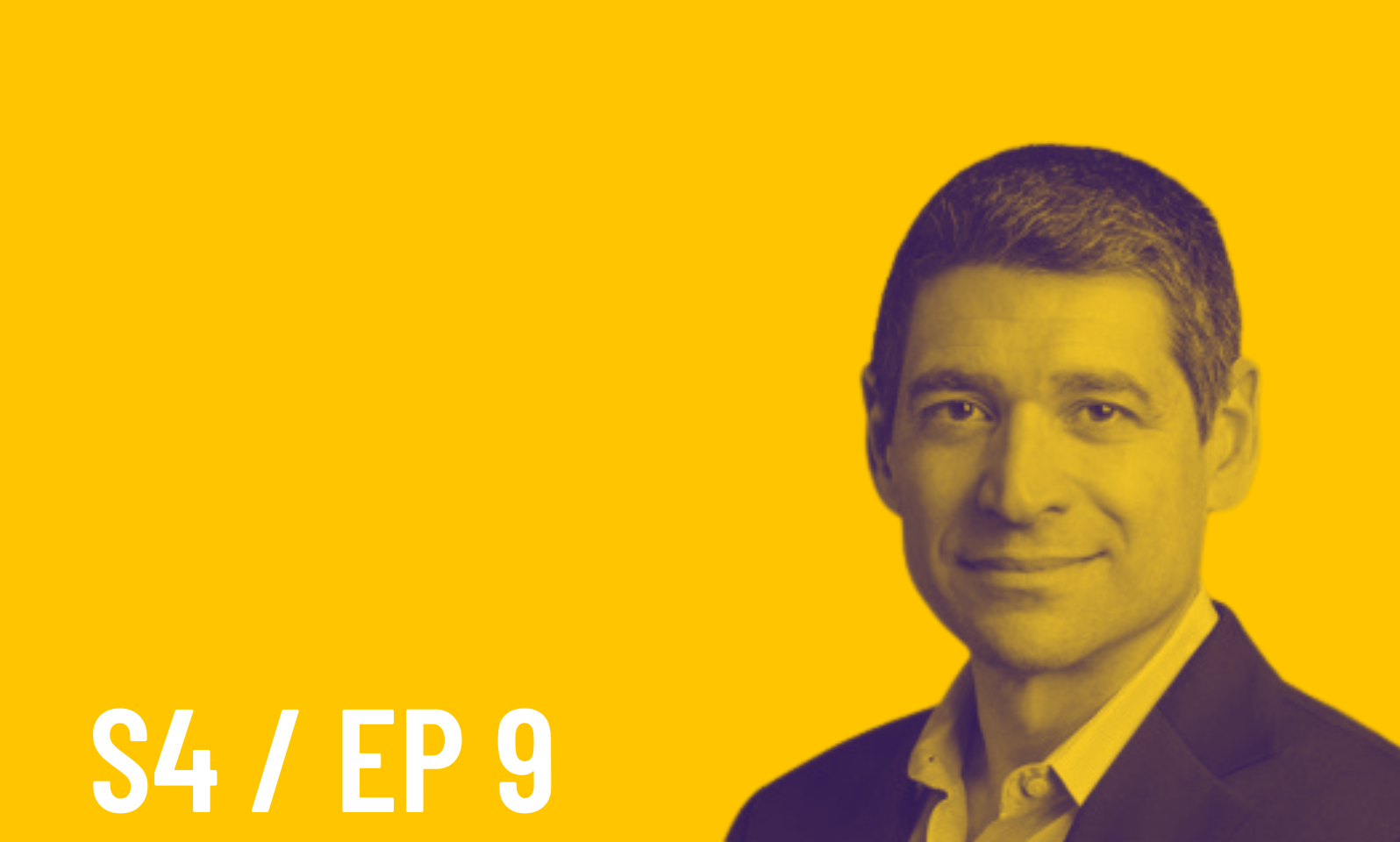Part 3: Dark Social, What the Heck is It?

Episode 8, Season 3
Part 3: Dark Social, What the Heck is It?
- August 21, 2023
Jump back in with fuoco’s Senior Digital Marketing Manager, Erica Freckelton, for Part 3 of our three-part series: content strategies for healthcare B2B.
Episode Description
Erica Freckelton not only has the coolest glasses at fuoco but she also has experience optimizing websites and social accounts for various tech and healthcare companies. With those glasses she can see what a lot of people can’t.
In this episode of How It’s Done:
- Shining a light on Dark Social
- Why Dark Social is ruining your online attribution
- Expert tips on how to make Dark Social work for you
- How traditional attribution is losing you money
- Erica Freckelton’s superpower

“As marketers, myself included, I oftentimes want to fall into the trap of thinking, I’ve made something that’s really high quality and that should be good enough. And it’s not.”
Erica Freckelton
Senior Digital Marketing Manager, fuoco
More From This Episode
Show Notes
Transcript
Recommended Reading
Show Notes
(1:18) Erica details what Dark Social is
(2:52) Why is Dark Social getting overlooked by companies
(5:48) Erica and Kriste discuss how you can evolve your attribution to implement Dark Social
(8:52) Erica and Kriste discuss how to implement this into your marketing strategy
Transcript
[00:00:00.330] – Kriste Goad
Hey, welcome to How It’s Done. A podcast for Curious Marketers. I’m Kriste Goad, I’ll be your host. And I’m really glad you’re here. We’re back today with Erica for part three in our three part series on B2B buying in healthcare. Today we’re tackling Dark Social what the heck is it? In part one for anybody who missed it, we talked about how B2B buying behavior has changed and what that means for healthcare marketers. And then in part two, we talked about demand creation versus demand capture. All these things are related. When you listen, you’ll understand why. But be sure to check those out if you haven’t already. Once again, Erica is Senior Digital Marketing Manager here at Fuoco, and she still has the coolest glasses at the agency.
[00:01:01.170] – Erica
Thank you so much.
[00:01:02.530] – Kriste Goad
Thank you for joining me again today, Erica.
[00:01:04.670] – Erica
Of course.
[00:01:05.990] – Kriste Goad
Okay, we’re going to start with a burning question. We’re going to end with a burning question. My starting burning question today is what the heck is Dark social?
[00:01:18.570] – Erica
Yes. It’s not a new concept, which is surprising, but it’s just the interactions that take place anywhere we’re identifying, exploring problems, we’re validating solutions. The reason we call it Dark Social, it’s nebulous as marketers to track. We can’t really see it in our analytics, but we’re talking about somebody DMs you a link to an article or a podcast. You are in a reddit or a slack with your peers or a discord, and you click on something. You’re on a zoom with your coworkers and they send you a link in a chat. Your boss forwards you a newsletter and you click on it. Or even a LinkedIn comment. Someone says something in a LinkedIn comment, you look them up later.Great examples.
[00:02:03.980] – Kriste Goad
Got it. Okay, that makes so much sense because how would we know? Those are really hard to track because that’s just sort of like someone whispering something in your ear or whatever the heck it looks like. I’m constantly getting and sharing things like that on text message or Instagram direct message, LinkedIn all the time. Super interesting.
[00:02:31.200] – Erica
And it carries a lot of weight when it comes from peers that we trust.
[00:02:34.470] – Kriste Goad
Right. Most often you’re going to click on it, you’re going to read it, you’re at least going to look at the headline, right?
[00:02:41.840] – Erica
But it breaks our Attribution and it’s a massive opportunity that most businesses aren’t considering because it breaks our Attribution.
[00:02:50.470] – Kriste Goad
Okay, so what does all this mean?
[00:02:52.650] – Erica
Yes. So all of this means is before we get into what all of this means, I think something that’s important to point out is this isn’t new, it’s very consistent, and it’s been around for a long time. I think that’s really important. As we talk about how it’s a massive opportunity that businesses are overlooking because it’s hard to track, it’s hard to attribute, it feels nebulous, much like leaning into demand capture. In the previous episode. For businesses, it might feel like you’re kind of on a cliff and you’re like, I don’t know what’s on the other side. It feels scary to lean into this strategy. However, as far back as 2012, we had Atlantic writers that noticed over half of their traffic, 56% of their overall traffic was coming from dark social. They noticed
[00:03:39.260] – Kriste Goad
To their Atlantic Articles?
[00:03:40.720] – Erica
To Atlantic Articles.
[00:03:41.280] – Kriste Goad
Oh, man, they do such great research.
[00:03:43.240] – Erica
Right. And that was 2012. And then they went and they validated it with other publishers as well. So they proved it wasn’t just an anomaly with The Atlantic. This held true for other publishers, and we’ve seen that remain true for the past 10 years
[00:03:58.510] – Kriste Goad
On every social channel too.
[00:04:00.830] – Erica
Yes. So it’s really enduring. And I think that that’s important.
[00:04:05.650] – Kriste Goad
Maybe it was like the original sort of like influencer strategy.
[00:04:09.400] – Erica
Really kind of was and we all sort of overlooked it in favor of these more easily attributable things right in front of our faces. Because of course, what gets measured gets done. Right.
[00:04:21.410] – Kriste Goad
How do you measure that? You can’t really measure it. And how did The Atlantic in this article
[00:04:28.480] – Erica
How did they arrive here?
[00:04:29.690] – Kriste Goad
Yeah, we’ll include a link to that article in our show notes so other people can take a look at that. But yeah, how did they figure it out?
[00:04:36.340] – Erica
Yeah. So part of the way that they arrived here, I think the thing that initially sparked their interest in where is all this traffic coming from? Is probably a question that a lot of people have had when looking in their analytics is seeing direct traffic to these really long, complicated URLs. Where you’re looking at it and you’re thinking, this many people did not sit down and type in the direct URL to an article. There’s no way. And so they had that question in mind and they started digging in, well, where did this traffic really come from? And it was from there that they started unraveling these threads. This traffic is losing referring links. It’s losing the parameters when it’s getting passed over or it didn’t even have them to begin with. This is just getting captured as referred or direct traffic.
[00:05:21.260] – Kriste Goad
Super cool. So they obviously made a lot of assumptions too.
[00:05:27.290] – Erica
Yes, absolutely.
[00:05:30.440] – Kriste Goad
Which we do as marketers. We know what we know and we know what the data can tell us but then we also have to make some assumptions and hypothesize.
[00:05:42.870] – Erica
Yeah. And then test them. Test and learn.
[00:05:45.890] – Kriste Goad
Yeah.
[00:05:48.990] – Erica
So evolving our attribution to actually track this stuff, I think the big question for companies is, okay, you say this is happening, prove it. And so some companies have actually set out to prove it, which is super cool to see. So Refine Labs did some really interesting research comparing self reported attribution on a free text field. How did you hear about us? But required, so you couldn’t skip the question.
[00:06:16.490] – Kriste Goad
So they were offering something of value and if they wanted it, if the person wanted it, they had to give that information.
[00:06:24.250] – Erica
Yeah, when they were converting on a form on their website, they had to say where they found them, but they were also still tracking where their software said they came from. Was it organic search, was it paid social, what have you? And after running this test, they found out that software reported attribution was over indexing on organic search by a lot. It was saying that 78% of conversions were coming from search and 12% of self reported conversions were saying, I found you on Google, which is a big gap. Right.
[00:06:57.830] – Kriste Goad
So what does that tell us?
[00:06:59.420] – Erica
So that tells us that, well, first off, we’ll tell you what the self reported responses said. The self reported responses said, we found you on a podcast, we found you in a community, we found you through word of mouth or social media. And so I think what it tells us is people are engaging with content in these ways out in the world, and then when they have a need later, they sit down and they Google your brand name, the words that come to mind that they associate with your company, hoping it’ll pull up that specific episode, maybe those types of things. And so your marketing automation platform might be calling it organic Search, but 12% of people are saying, yeah, I just found you when I was in Google, I looked for something unbranded and I found you. Most people are saying, yeah, no, somebody sent me a podcast and I listened to it and you sounded really smart and that was how I ended up here.
[00:07:49.240] – Kriste Goad
Very interesting. Also interesting when you think about in terms of podcasting in particular, we don’t have advertising on our show yet, but a lot of podcasts have monetized their podcast and have ads and I’m always listening from the marketers standpoint, listening to podcasts or anything I’m looking at, really, I’m like, oh, that’s a great ad placement
[00:08:14.680] – Erica
Right.
[00:08:15.060] – Kriste Goad
And I have found myself going and purchasing something based on an ad within a podcast and never even was on my radar actually. You know exactly where that’s coming from because if it’s an ad, you go like, okay, clearly we need to continue to advertise on these podcasts because we’re getting a lot of traffic. So slightly different from what you’re talking well, very different from what you’re talking about, but similar places, right?
[00:08:46.630] – Erica
Yeah, it was a really interesting result that people are finding your brand in so many different places.
[00:08:52.730] – Kriste Goad
How do you think through that in your strategy? You’re thinking through your content strategy to be like, okay, we know there’s going to be like, if we do this right, people are going to share this, this is going to get passed around, promoted, and that’s more valuable than any ad we could purchase.
[00:09:11.000] – Erica
Exactly. And I think the takeaway for marketers with that is the only way to win with Dark Social is you have to produce something that people genuinely want to pass along. They want to send it to their coworkers, they want to send it to their peers, whoever. That’s the only way to actually get ahead with Dark Social. And as marketers, myself included, I oftentimes want to fall into the trap of thinking, I’ve made something that’s really high quality and that should be good enough. And it’s not. It simply doesn’t matter if the thing that you’ve done is technically sound, because if we think about why we as individuals share stuff on our own LinkedIn or wherever else we are on the Internet, it’s not because it’s technically sound. We don’t see a piece of content and think like, wow, they really dotted all their I’s and crossed the T’s on this. I need to share it. It’s for some emotional reason. Spark Toro published a really interesting post on this, and they broke it down into a couple of different key categories, and they basically said when people share stuff, it’s because of novelty, belief, reinforcement, relationships. Fear is a big motivator, surprise, controversy, familiarity, or seeking fame, rankings, ego, nowhere in there is technically sound content. So I think that’s what marketers really need to really need to keep in mind.
[00:10:36.650] – Kriste Goad
A fun meme like, whatever works when you think about it that way. We’ve seen so much evidence of how this works over the last few years with disinformation.
[00:10:48.360] – Erica
Yes.
[00:10:49.630] – Erica
That’s put out there with great intention.
[00:10:53.970] – Erica
Yes.
[00:10:55.010] – Kriste Goad
And then shared and shared and reshared. And then it becomes a lot of people’s truths.
[00:11:04.630] – Erica
Yes. It’s so true. Like, it plays on any one of these things. Fear, controversy, belief, reinforcement. Like all of those things. Yeah.
[00:11:14.120] – Kriste Goad
Propaganda.
[00:11:15.170] – Erica
Yeah.
[00:11:15.500] – Kriste Goad
Maybe we should be thinking more of the propaganda mind.
[00:11:19.290] – Erica
Propaganda fear brand.
[00:11:21.210] – Kriste Goad
Yeah, let’s go with the fear. Let’s go with fear. How do you feel about that?
[00:11:24.970] – Erica
Honestly, a lot of marketing stuff does take that approach.
[00:11:28.210] – Kriste Goad
Yeah, it doesn’t sit well with my soul. It’s effective, right?
[00:11:40.590] – Erica
Yeah. I think all of these things are the things that move people to action, not just really good content, informative stuff.
[00:11:47.640] – Kriste Goad
Right. Interesting. Okay, well, so now we know what the heck dark Social is. All right.
[00:11:54.740] – Erica
What are we going to do about it?
[00:11:56.090] – Kriste Goad
Well, yeah. What the heck are we going to do about it? Well, what’s always fun as a marketer is when you’re working with clients that want you to think about those things and that want to spend some time and energy and dollars on that kind of thinking, because that’s the fun stuff. Right. It takes really using your brain and being that marketing nerd as you self describe.
[00:12:22.770] – Erica
The best clients.
[00:12:24.190] – Kriste Goad
Yeah, that’s fun stuff. That wraps up our three part series on B2B buying in healthcare. We covered off on part one how B2B buying behavior has changed and what that means for healthcare marketers. Part two was demand creation versus demand capture. And then, of course, today dark social. What the heck is it? This has been super fun. I’ve learned so much. I hope our listeners have learned so much. I’m sure they have. I have one final burning question for you, though, Erica. Are you ready?
[00:13:01.710] – Erica
Let’s hear it.
[00:13:02.810] – Kriste Goad
If you were a superhero for one day, what would your superpower be?
[00:13:09.070] – Erica
I’m going with the ability to heal myself or the ability to not hurt myself. And then I’m going to the skate park and we’re about to tear it up.
[00:13:20.060] – Kriste Goad
Whoa. You’re going to go like Sean White out on the slopes?
[00:13:24.770] – Erica
We are going to make sure I cannot injure myself because these bones do break. But then we’re going to go have some fun.
[00:13:30.930] – Kriste Goad
Man, that would be awesome if you could do that.
[00:13:34.480] – Erica
Just a little insurance policy.
[00:13:36.610] – Kriste Goad
Cool. That’s really good one. Awesome. Well, thank you, Erica. This has been super fun. And to our listeners, don’t miss out. Be sure to listen to all three parts of this three part series. If you haven’t already, be sure to subscribe to how it’s done wherever you get your podcast. You can also find the podcast. Plus, learn more at our website, growwithfuoco.com growwithfuoco.com. Thanks so much for listening. Thank you, Erica. I’ve really enjoyed this.
[00:14:12.320] – Erica
Thank you.
[00:14:13.570] – Kriste Goad
That’s it for now. Thanks so much for listening. We’re looking forward to keeping great conversations coming your way as we grow this podcast. There’s even more great content from our conversations on our blog. Be sure to check it out at growwithfuoco.com. That’s growwithfuoco.com stay tuned until next time, and no matter what, stay curious.
Recommended Reading
- Follow Erica on LinkedIn
- The Atlantic article on Dark Social
- SparkToro: Who Will Amplify This? And Why?
- Part 1: How B2B Buying Behavior has Changed (and What it Means for Healthcare Marketers!)
- Part 2: Demand Creation vs. Demand Capture
More From The How It’s Done Podcast
Want to be a guest on a future episode?
Share your thoughts directly with our show host, Kriste Goad.



